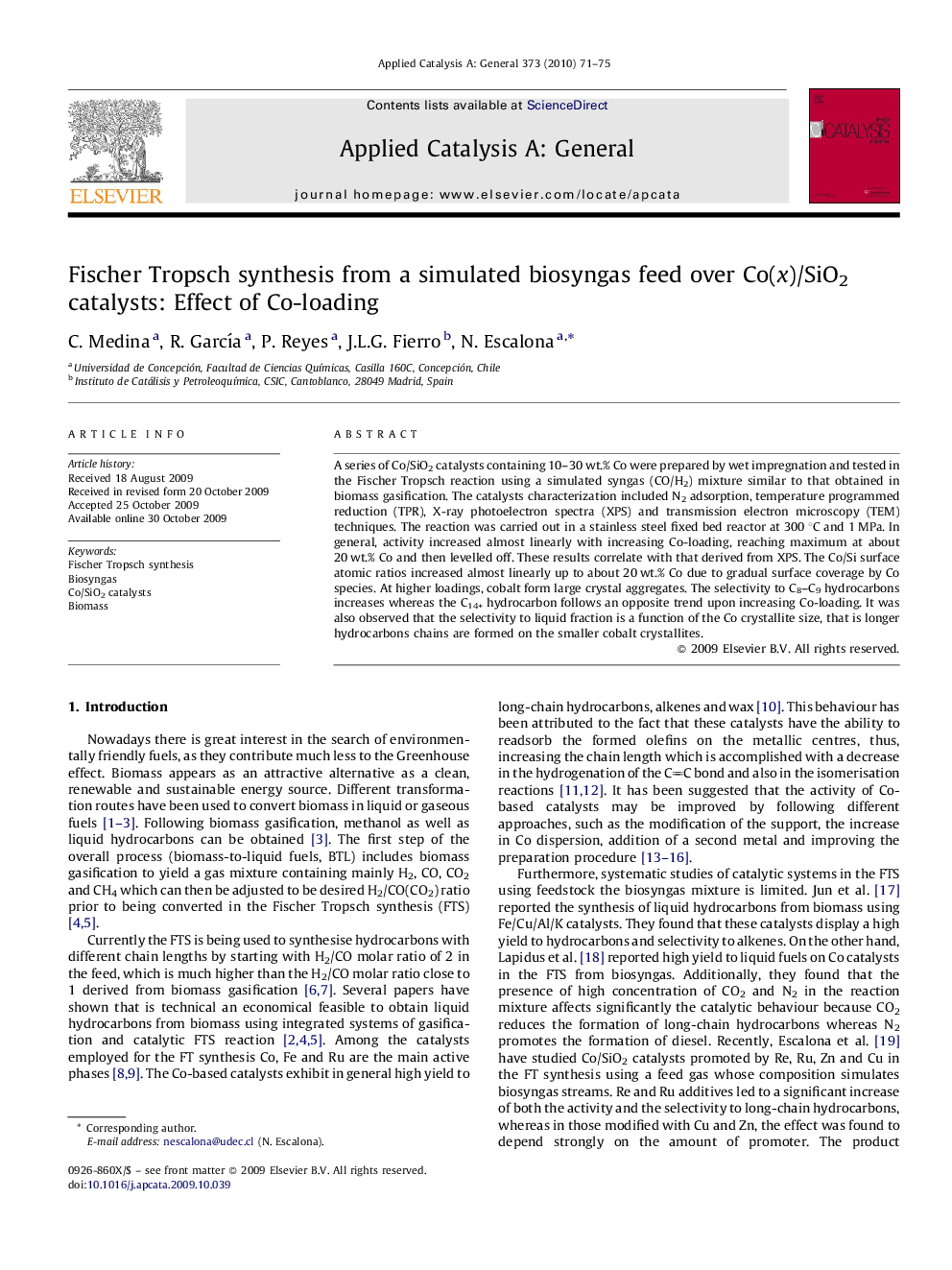| Article ID | Journal | Published Year | Pages | File Type |
|---|---|---|---|---|
| 42226 | Applied Catalysis A: General | 2010 | 5 Pages |
A series of Co/SiO2 catalysts containing 10–30 wt.% Co were prepared by wet impregnation and tested in the Fischer Tropsch reaction using a simulated syngas (CO/H2) mixture similar to that obtained in biomass gasification. The catalysts characterization included N2 adsorption, temperature programmed reduction (TPR), X-ray photoelectron spectra (XPS) and transmission electron microscopy (TEM) techniques. The reaction was carried out in a stainless steel fixed bed reactor at 300 °C and 1 MPa. In general, activity increased almost linearly with increasing Co-loading, reaching maximum at about 20 wt.% Co and then levelled off. These results correlate with that derived from XPS. The Co/Si surface atomic ratios increased almost linearly up to about 20 wt.% Co due to gradual surface coverage by Co species. At higher loadings, cobalt form large crystal aggregates. The selectivity to C8–C9 hydrocarbons increases whereas the C14+ hydrocarbon follows an opposite trend upon increasing Co-loading. It was also observed that the selectivity to liquid fraction is a function of the Co crystallite size, that is longer hydrocarbons chains are formed on the smaller cobalt crystallites.
Graphical abstractFischer Tropsch reaction using a mixture similar to that obtained from biomass transformation (biosyngas) has been studied on Co/SiO2 catalysts. The CO conversion over Co/SiO2 catalysts is mainly determined by the dispersion of Co species. A higher metal particle decreases the production of hydrocarbon chain C14+ and promotes the synthesis of smaller hydrocarbon chain lengths (C8–C9).Figure optionsDownload full-size imageDownload high-quality image (88 K)Download as PowerPoint slide
